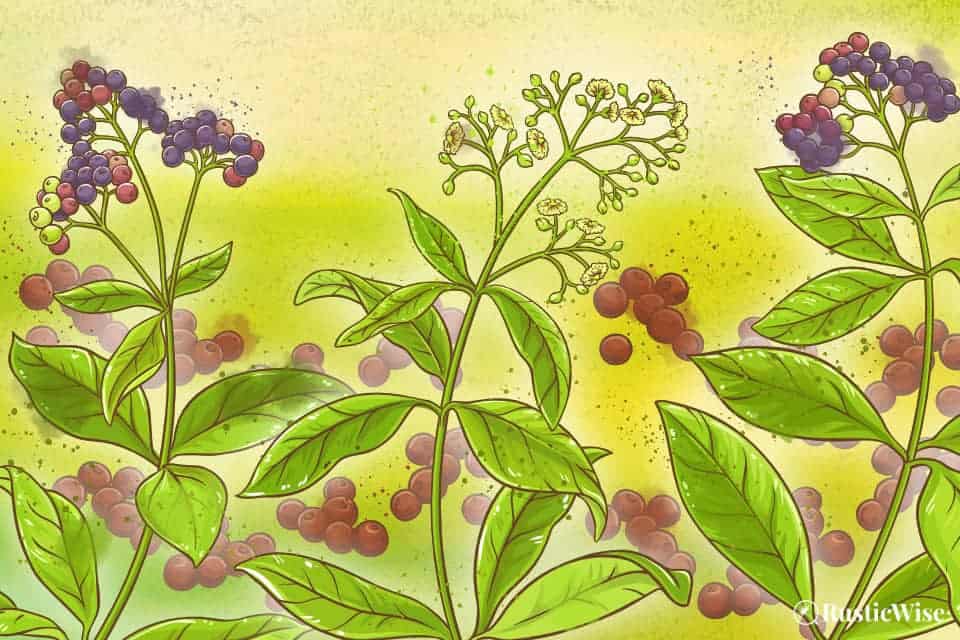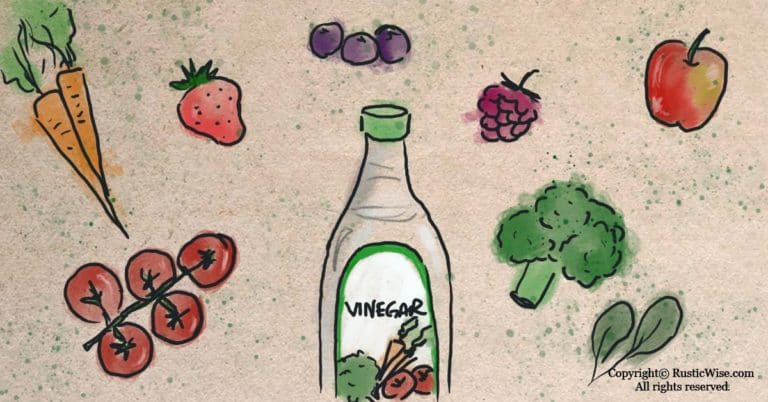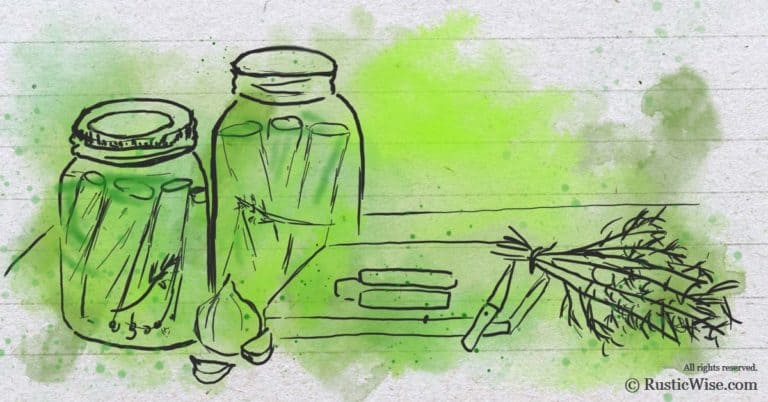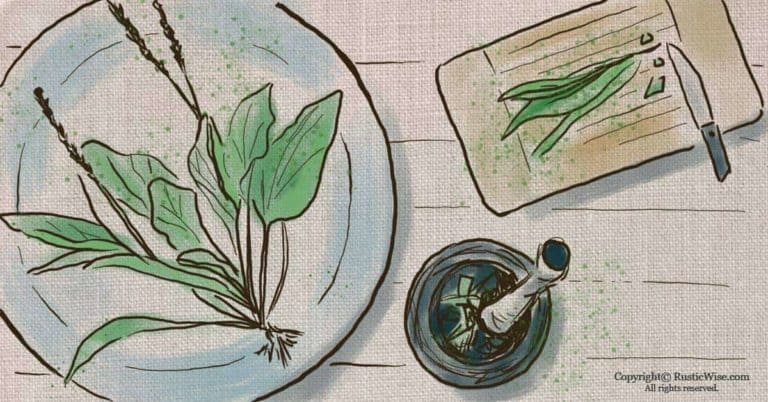What Spices Are in Allspice? Here’s How To Make Your Own Allspice
In the world of herbs and spices, allspice has an enticing aroma, rich flavor, and a cool name to boot.
So, what spices are in allspice? While the name implies a blend of spices, it actually comes from one plant—the evergreen pimento tree (Pimenta dioica). The berries of the tree are dried and then used whole or ground.
If you’re mulling over a recipe for dinner and come across allspice in the ingredients, but don’t have any at home, don’t fret. We’ll show you how to make an easy allspice replacement using cinnamon, nutmeg, and cloves.
What spices are in allspice? A closer look at allspice
True allspice comes from the dried berries of an evergreen pimento tree belonging to the Myrtle family (Myrtaceae).¹
The main cultivar is Pimenta dioica which mainly comes from Jamaica. Other common names for allspice include Jamaica pepper, Myrtle pepper, or pimento.
Other pimento trees (Pimenta officinalis) grow in warm climates, mainly in Central America and the West Indies, including Guatemala, Honduras, and Mexico.
The P. dioica tree produces green fruits that resemble olives. Once harvested and sun-dried, the fruits shrink in size and turn brown. When completely dried, they look like peppercorns.
Allspice can be used whole, or ground into a fine powder.
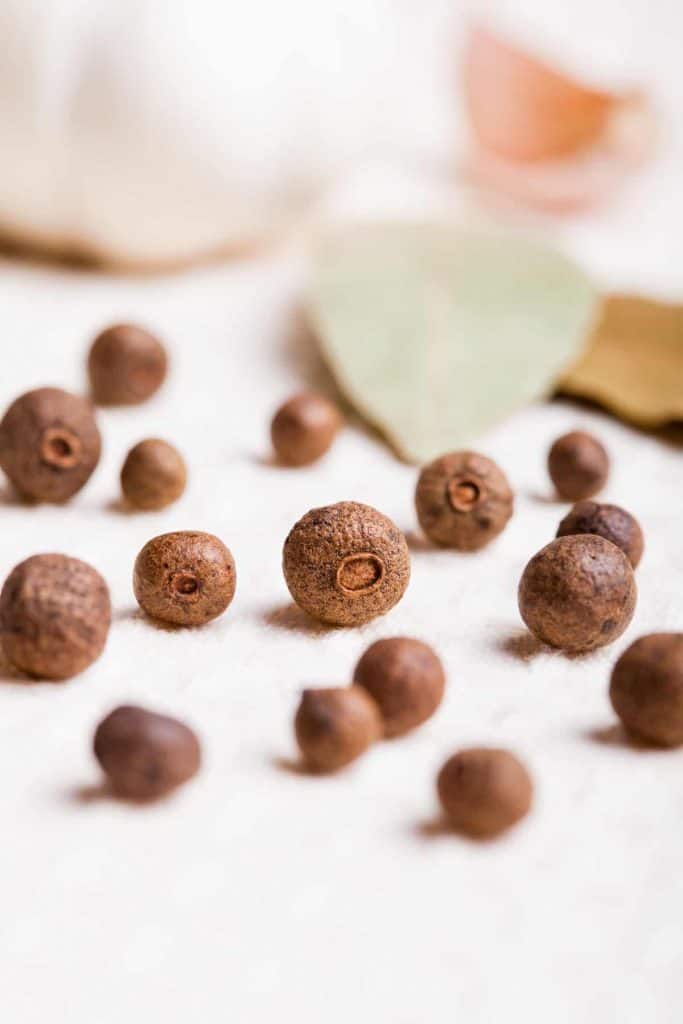
Credit: Vector State
The other types of “allspice” plants
While true allspice comes from the P. dioica tree, there are also other “allspice” plants of no relation.
The Calycanthus floridus, commonly known as Carolina allspice, or Eastern sweetshrub, is a perennial shrub or tree that grows in the southern and eastern parts of North America.²
Its crushed leaves and wood have a similar aroma to allspice fruits. The bark is dried and often serves as a cinnamon substitute.
Then, there’s also the Calycanthus occidentalis tree, commonly called Californian allspice, or Western sweetshrub. It grows in the south-western parts of North America, including California. The bark from Californian allspice is also dried and used as a cinnamon or allspice alternative.³
Japanese allspice (Chimonanthus praecox) is another aromatic shrub that grows natively in eastern Asia.¹
Last, but not least, is the wild allspice or spicebush (Lindera benzoin) that grows throughout the eastern regions of North America. This wild allspice produces berries similar to P. dioica and serves as its true alternative.¹
What does allspice taste like?
This handy and versatile spice tastes like a blend of cinnamon, cloves, and nutmeg (with a slight dash of pepper!). It has lovely notes of sweetness and earthiness which make it great for flavoring a variety of dishes.
Allspice is a mainstay in European, Caribbean, and Middle Eastern cuisines.

Credit: Biodiversity Heritage Library / Flickr
Easy substitute for allspice: 2 variations
If you’re out of allspice, no worries. Here’s an easy substitute using just three common pantry spices: cinnamon, cloves, and nutmeg.
Use this allspice substitute in a 1 to 1 ratio.
For the simplest method, combine all three spices in equal measures: 1 part cinnamon: 1 part cloves: 1 part nutmeg.
- For 1 teaspoon allspice substitute use: 1/4 teaspoon (heaping) ground cinnamon + 1/4 teaspoon (heaping) ground cloves + 1/4 teaspoon (heaping) ground nutmeg.
Or, try a variation that’s heavier on the cinnamon:
- For 1 teaspoon allspice substitute use: 1/2 teaspoon ground cinnamon + 1/4 teaspoon ground cloves + 1/4 teaspoon ground nutmeg.
The truth is, there’s no hard and fast rule that dictates an allspice alternative. Use your tastebuds to guide your way!
This DIY allspice is a good homemade spice recipe you can make ahead of time and store for use as a dry rub mix. Or, you can put this mixture into glass mason jars for an easy homemade gift.
How to use allspice
While you might be inclined to stick with using allspice in only desserts and other sweet dishes, allspice also adds a nice depth to mild savory dishes too.
Use allspice to enhance the flavor of the following dishes:
- Beverages such as apple cider, coffee, eggnog, hot chocolate, and mulled wine
- Cake (vanilla cake, walnut cake, or carrot cake)
- Cookies
- Fish
- Fruit pies
- Fruit cobblers and crumbles
- Green beans
- Smoked sausage or other meat dishes
- Pan-fried or oven-roasted cabbage
- Add to your pickling spice
- Pork chops
- Poultry
- Curries (fish curry!)
- Soups
- Stews
- Tomato-based dishes
- Sweet breads
What’s the shelf life of allspice?
Whole spices have a longer shelf life than ground spices. Whole allspice (when properly stored in an airtight container away from heat and light) may last 1–2 years. Ground allspice (or allspice powder) is best used within 6-12 months but may keep up to 2 years.
Related questions
What’s the difference between Jamaican allspice vs. allspice?
Jamaican allspice is highly prized as it has a higher essential oil content of 4.5 percent compared to 2.5 percent from Central American varieties. The aromatic essential oil is made of a compound called eugenol.¹
Allspice refers to the dried berries from the pimento (Pimenta dioica) tree, also known as Jamaica pepper, or Jamaican allspice. The P. dioica tree grows natively in Jamaica, as well as other countries, including Mexico and Guatemala. The term Jamaican allspice may also refer to the dried spices specifically grown in Jamaica from the pimento tree.
Is five-spice the same as allspice?
No, five-spice is not the same as allspice. As the name implies, it comprises a blend of five different spices, while allspice comes from a single spice—the dried berries from the allspice tree (Pimenta dioica).
What’s in five-spice powder?
Most five-spice blends contain star anise, fennel seeds, cinnamon, cloves, and black pepper (peppercorns). Sometimes this is referred to as Chinese five-spice as it’s a mainstay in Asian cuisine as it incorporates all five tastes: sweet, salty, sour, bitter, and a touch of umami.
However, there are some variations on the five-spice combination. In my spice rack I have a bottle of powdered five-spice which contains nutmeg instead of peppercorns.
Would you like more timeless tips via email?
Fun tips to help you live an independent, self-sustaining lifestyle. Opt-out at any time.


References
- Britannica, Allspice, https://www.britannica.com/plant/allspice. Accessed June 2022.
- Plants for a Future, Calycanthus floridus, https://pfaf.org/user/Plant.aspx?LatinName=Calycanthus+floridus. Accessed June 2022.
- Plants for a Future, Calycanthus occidentalis, https://pfaf.org/user/Plant.aspx?LatinName=Calycanthus+occidentalis. Accessed June 2022.
- Geiger, Marlene (17 September 2018). “Fall Spice Refresher,” Iowa State University. Accessed June 2022.

Author: Josh Tesolin
Josh is co-founder of RusticWise. When he’s not tinkering in the garden, or fixing something around the house, you can find him working on a vast array of random side projects.

